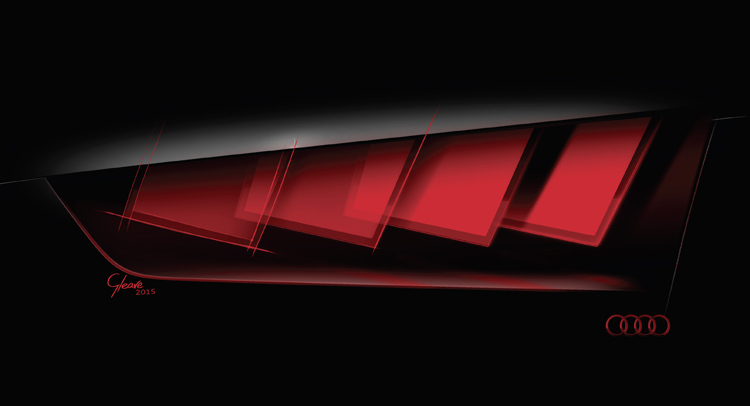Audi will showcase the new Matrix OLED lighting technology on a new concept car that will be unveiled at the Frankfurt Motor Show in September.
According to the automaker, the new Matrix OLED lights enable “a previously unattainable level of lighting homogeneity, opening up further creative opportunities for design.”
The new technology, currently under development for production taillights, will be showcased on a mysterious concept car in Frankfurt. Audi says the Matrix OLED lights combine high‑tech engineering and design ideally.
Each OLED unit includes two electrodes (of which at least one must be transparent) which incorporate numerous thin layers of organic semiconductor materials. A low DC voltage (between three and four volts) activates the layers, each of which is less than one‑thousandth of a millimeter thick, to light them. The color is based on the molecular composition of the light source.
The difference between point light sources (such as LEDs) and OLEDs is that the former are made of semiconductor crystals, while the latter are flat light sources. Advantages of OLEDs include the more homogeneous light, the continuously variable dimming, as well as the fact that the lights do not cast any shadows and do not require any reflectors, light guides or similar optical components – therefore they are efficient and lightweight. Furthermore, they hardly need any cooling.
In the near future, OLEDs will be able to generate turn signal and brake lights too, as soon as further increases in light density are realized.





